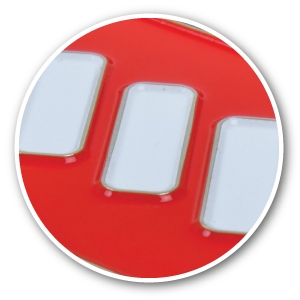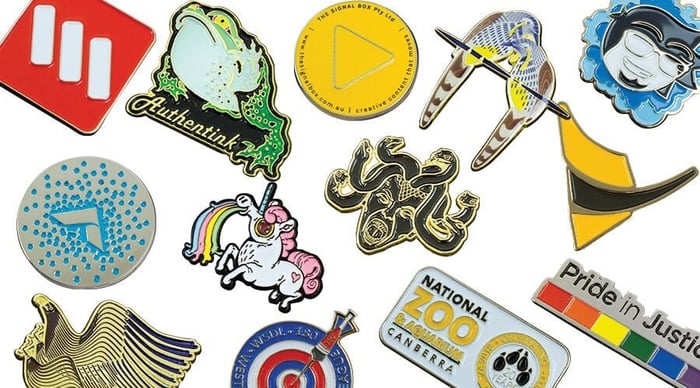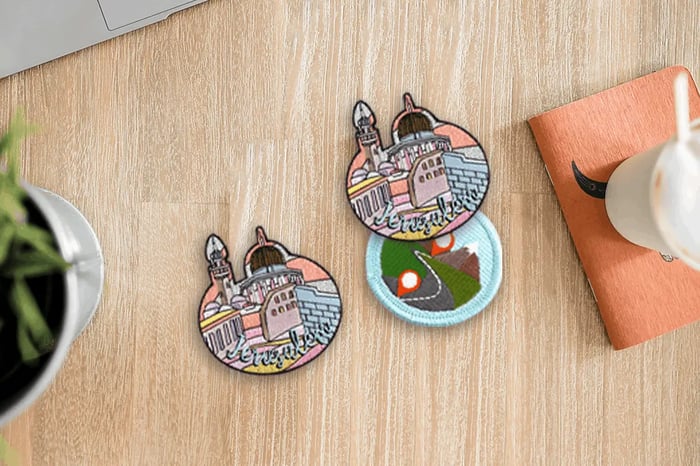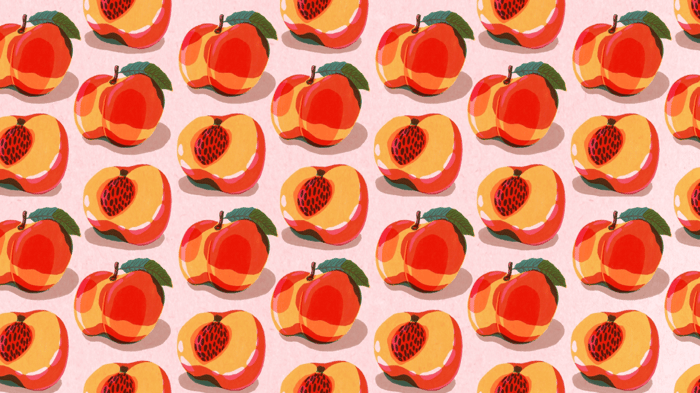![]()
One of our most common questions is: "Just what is the difference between soft and hard enamel?"
To start hard and soft enamel pins are both very popular options to create, sell and collect enamel pins and both are made using modern versions of an ancient technique known as cloisonné. The general idea behind cloisonné is to use ridges on the surface of a metallic object to separate and hold applications of coloured enamel that will be cured and finished as desired.
All our enamel pins can be produced using either soft or hard types of enamel. The cloisonné process is simply adjusted to accommodate different material:

Soft enamel
Starts as a viscous paint that will then be cured at temperature. The lapel pin to be treated will first be stamped to produce the recessed areas or ridges needed to contain the relatively free-flowing enamel (think of filling up a shallow swimming pool). The pin will then be plated with one of our metal finishes like gold, silver, nickel, black or copper, after which enamel paint will be applied.
A quick trip through a special oven at a fairly low temperature cures the enamel and produces an attractive pin. One distinctive feature of this type of lapel pin is that the level of the cured enamel will remain well below the surrounding metal ridges, giving it a textured feeling and look. Lapel pins made using soft enamel, can also finished with an epoxy dome which protects and smooths.

Hard enamel
Hard enamels are made from solid pieces of resin or glass that are cured at much higher temperatures than soft ones. A hard enamel lapel pin starts out much like one produced using soft enamel, but a significantly more involved process follows.
Resins of the chosen colours are added to appropriate parts of the pin and cured one at a time, with each then being polished or almost linished to bring it down to the level of the pin's exposed ridges. Finally, the pin will be electroplated before being polished one last time.
Just tell me which method is better Yourstuffmade!
Each of these two approaches has its own advantages and distinctive features. Some of the most important issues to consider when choosing between them include:
- Cost. Lapel pins made using soft enamel tend to cost significantly less than those that include hard enamel. As hard enamel requires a significantly more labor-intensive production process, this is almost unavoidable.
- Detail. Although the difference is typically small, soft enamel pins are generally capable of displaying clearer, slightly more detailed images. Because hard enamel pins are polished several times, their exposed ridges can become somewhat more rounded and spread out.
- Elegance. Pins made using modern hard enamel processes can quite closely reflect the results achieved through classical cloisonné techniques. While a well-designed, properly produced soft enamel pin should always be attractive, it will not normally seem as elegant as a hard enamel counterpart.
- Durability. Hard enamels are inherently more scratch-resistant and durable than soft ones. Pins made with soft enamel, however, can be covered in epoxy that protects them against damage.
- Texture. A bare soft enamel lapel pin will have a texture that results from the difference in height between its painted portions and the metallic ridges between them. Because the areas to be coloured on hard enamel pins are overfilled and then polished down after curing, a much smoother look and feel results. When soft enamel pins are covered in epoxy, the smoothness of that surface will take the place of the usual texture.
Both soft and hard enamels can be used to produce truly attractive and appealing custom lapel pins. Understanding how each process works and the benefits typical of each will make it easy to choose appropriately.
Still have questions? read our other blogs or contact us
•Email • Instagram • Book a chat • Facebook





